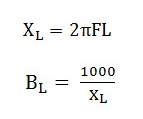The wavelength of 5G mmWave, or millimeter-wave, is a characteristic of the electromagnetic waves used in the millimeter-wave frequency range for 5G communication. Millimeter waves represent a higher frequency band compared to the traditional sub-6 GHz frequencies used in previous generations of wireless communication. Let’s explore in detail the wavelength of 5G mmWave:
- Frequency Range of 5G mmWave:
- 5G mmWave operates in frequency bands above 24 GHz, typically ranging from 24 GHz up to 100 GHz or even higher. These frequencies fall within the millimeter-wave spectrum, hence the term “mmWave.”
- Wavelength Calculation:
- The wavelength (λ) of an electromagnetic wave is inversely proportional to its frequency (f) and is calculated using the formula: λ = c / f, where c is the speed of light (approximately 3 x 10^8 meters per second).
- Calculation for mmWave Wavelength:
- For 5G mmWave frequencies, which typically range from 24 GHz to 100 GHz, the corresponding wavelengths can be calculated using the formula mentioned above.
- Example Calculation for 28 GHz: λ = (3 x 10^8) / (28 x 10^9) ≈ 10.71 mm
- Example Calculation for 60 GHz: λ = (3 x 10^8) / (60 x 10^9) ≈ 5 mm
- The wavelengths in the millimeter-wave range are in the order of millimeters, which is significantly shorter than the wavelengths associated with lower-frequency bands used in previous generations of wireless communication.
- For 5G mmWave frequencies, which typically range from 24 GHz to 100 GHz, the corresponding wavelengths can be calculated using the formula mentioned above.
- Characteristics of mmWave Wavelengths:
- The short wavelengths of 5G mmWave signals have several implications:
- Highly Directional: Due to the short wavelength, mmWave signals exhibit more directional characteristics. This makes it feasible to use beamforming techniques for targeted and focused transmission, enhancing communication reliability and efficiency.
- Susceptibility to Obstructions: Millimeter waves have limited penetration capabilities and are more susceptible to absorption by atmospheric gases and blockages by physical obstacles such as buildings and foliage. This characteristic influences the design of mmWave networks and requires careful planning for effective signal propagation.
- The short wavelengths of 5G mmWave signals have several implications:
- Use Cases and Applications:
- The use of mmWave frequencies in 5G enables high data rates and low latency, making it suitable for various applications, including:
- Enhanced Mobile Broadband (eMBB): Delivering high-speed internet access for mobile devices and fixed wireless broadband.
- Fixed Wireless Access (FWA): Providing last-mile connectivity to homes and businesses without the need for physical cables.
- Augmented Reality (AR) and Virtual Reality (VR): Supporting immersive experiences with low-latency, high-bandwidth connections.
- Massive Machine Type Communication (mMTC): Facilitating connectivity for a large number of devices in densely populated areas.
- The use of mmWave frequencies in 5G enables high data rates and low latency, making it suitable for various applications, including:
- Regulatory Considerations:
- The use of mmWave frequencies requires careful consideration of regulatory aspects. Different countries and regions may allocate specific frequency bands for 5G mmWave, and regulatory bodies set standards and guidelines to manage spectrum usage.
- Antenna Design and Implementation:
- The design of antennas for mmWave communication is critical to harness the benefits of high data rates and directional transmission. Antenna arrays and beamforming technologies are commonly employed to optimize signal propagation in mmWave networks.
- Challenges and Mitigations:
- While mmWave offers significant advantages, it also poses challenges such as limited coverage and susceptibility to blockages. Network planners and engineers implement techniques like small cell deployment, relay nodes, and advanced beamforming to address these challenges and enhance mmWave network performance.
- Coexistence with Lower Frequency Bands:
- 5G networks often operate across multiple frequency bands, including sub-6 GHz bands and mmWave bands. The coexistence of different frequency bands allows for a balanced approach, leveraging the advantages of mmWave for specific use cases while maintaining broader coverage with lower frequencies.
In summary, the wavelength of 5G mmWave falls within the millimeter range, and its short wavelength characteristics influence the design, implementation, and use cases of 5G networks. The high data rates and low latency associated with mmWave make it a crucial component for realizing the full potential of 5G in various applications and scenarios.
